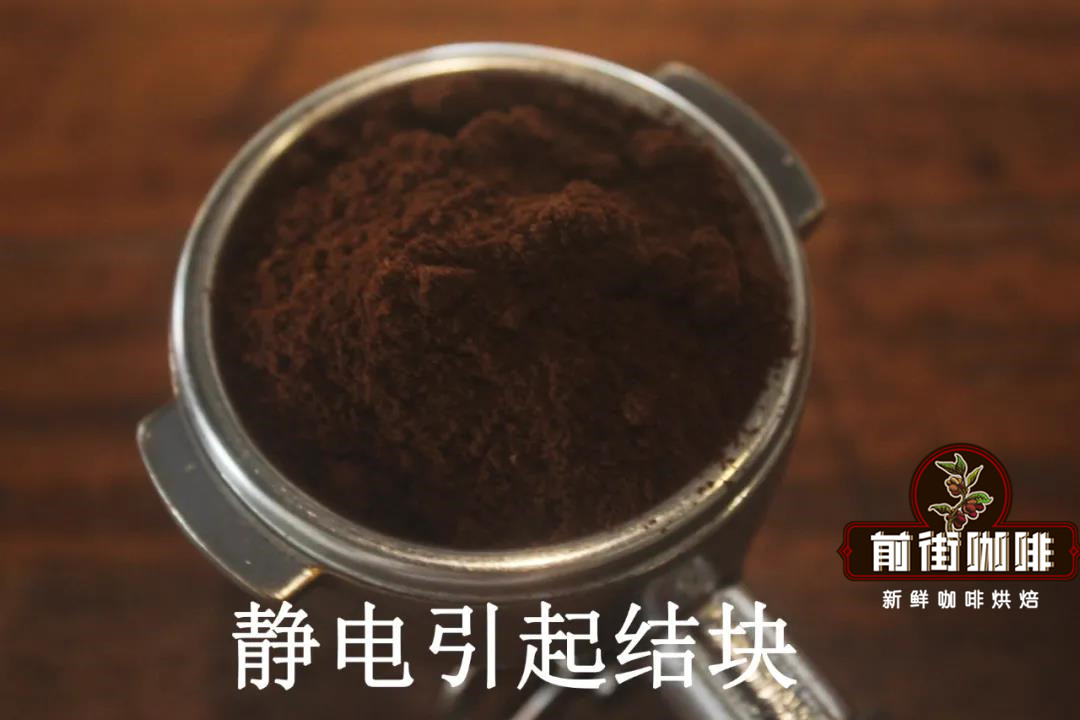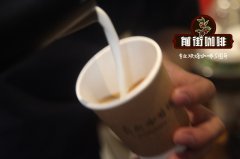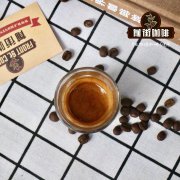Italian espresso bean characteristics story espresso bean brand recommendation

Professional coffee knowledge exchange more coffee bean information please follow the coffee workshop (Wechat official account cafe_style)
Espresso is the foundation of espresso. For baristas, extracting espresso is the most basic and difficult skill to master. The reason is that small details can affect the quality of a cup of espresso. Qianjie Coffee has shared several issues of the Coffee formation series on the official account, and the response is good. We can see that whether it is because of work or interest, more and more people are interested in coffee. Today, Qianjie Coffee will explain to you the details that should be paid attention to when making Italian coffee Espresso.

Starbucks specializes in a concentrated roasted coffee bean made from Latin America and Indonesia, characterized by strong aromas and soft acidity and balanced with strong caramel sweetness. Qianjie Coffee currently has four different flavors of Italian beans, one of which is also made from Latin America and Indonesia. In the following content, Qianjie Coffee will share the blending parameters we use.

See how the front street coffee makes a cup of espresso.
[detail 1] dry the powder bowl before receiving the powder
Remove the coffee handle from the brewing head, the coffee handle will leave water stains, when receiving the powder, the water on the wall of the powder bowl will soak the coffee powder, resulting in uneven extraction. So Qianjie Coffee must dry the handle before powdering it.


[detail 2] cloth powder
Cloth powder is actually the process of putting the ground coffee powder into a powder bowl and distributing it evenly. The most important thing in this step is to be uniform (not smooth).
The two most important purposes of cloth powder are breaking and leveling. General electric bean grinders produce static electricity during grinding, causing coffee powder to agglomerate, and one of the purposes of cloth powder is to break up the caked coffee powder and keep the gaps between coffee powders consistent, and then the other purpose is to flatten the coffee powder, so as to ensure that the coffee powder can be pressed evenly behind.

The common ways of cloth powder are finger cloth powder and cloth powder cloth powder. Finger cloth powder is to gently move the cloth flat powder bowl back and forth on the powder bowl with your fingers. Qianjie Coffee notices that some friends will squeeze the powder layer when they put their fingers on the powder bowl, so as to avoid this technique. To be exact, the fingers move horizontally on the edge of the powder bowl.

The powder distributor can achieve the effect of mixing coffee powder, breaking agglomeration, evenly distributing particles, etc., but there are also some defects, such as wasting coffee powder, complicated tools, certain skills to operate, and more downward pressure when distributing the powder. may lead to internal cracks, just surface smoothing, distribution and thickness can not be guaranteed and other defects.


[detail 3] the pressing powder should be flattened
Pressing powder is to press the loose coffee powder with a powder hammer, so that the coffee pressed powder can have certain resistance when facing the water pressure of 9bar.
Qianjie Coffee has done several groups of experiments, if the pressed powder is not pressed tightly enough and flows too fast and too freely, the final espresso will show an unpleasant sense of water; if the pressed powder is pressed too tightly, the resistance of pressed powder is too strong, it takes longer for the water to soak into pressed powder, and the final extracted coffee is sticky and bitter. Generally, just concentrate your strength on the arm (15-25kg) and press it down.
Gently hold the hammer with your hand and adjust the handle of the hammer until it seems to be an extension of your arm. Keep your wrists straight so that the bottom of the pink hammer handle is comfortably placed in the palm. This posture minimizes the pressure on the wrist.

Keep the powder hammer horizontal and squeeze gently on the powder pile. And then that's enough. You don't have to twist or press a second time. The more times you press, the pressed powder will form layers. Be careful to flatten it, otherwise it will cause the powder layer to be thick on one side and thin on the other, resulting in uneven extraction.

After picking up the powder hammer, there may be some loose coffee powder on the wall of the powder bowl or on the surface of the powder bed. Qianjie Coffee should remind you not to knock on the coffee handle to avoid loosening the fit between the powder bowl wall and pressed powder, resulting in a channel effect. As long as the handle is turned over, the powder can be removed. Next, wipe the edge of the powder bowl and wipe the coffee powder clean.
[detail 4] extraction
Buckle the cooking handle and press the cooking button quickly. Qianjie Coffee has been tested, and the longer it takes from the handle to the button, the surface of pressed powder will be "scorched" by the high temperature of boiling head. Causes the extracted espresso to be scorched and bitter.
Press the cooking button to count the time, without pre-soaking, the liquid will come out after 3-5 seconds.

At the stage of 3 to 5 seconds, you will see the flow of sticky brown espresso. At this stage, as long as you see a little yellow or there is a gushing state, it means that a channel has been formed, and the reason may be that the grinding degree is too rough, or the powder distribution and pressing powder are not uniform.
During the period of 8 to 12 seconds, the liquid will be mixed with some orange-brown grease, and the flow rate is stable.

In the rest of the time, the color of the effluent will become lighter and lighter. The whole extraction process should be completed within 20-30 seconds. (the concentrated extraction ratio of Qianjie coffee is 1:2)

Espresso beans of four types of front street coffee
[boutique match] Colombia: Brazil, proportion 315% Arabica, cooked
Flavor features: comfortable sweet and bitter taste, the entrance is extremely smooth; with a touch of grass, the fragrance is slightly bitter; smooth and smooth, the aftertaste can make people comfortable; using medium-deep baking, when doing concentration, the taste will be soft, slightly sour, sweet and nutty, the overall feeling will not be too exciting, peaceful, grease belongs to medium.
[commercial matching] Colombia: Brazil: Robsta, ratio 3:6:1, familiar
In terms of the flavor of individual beans, the taste of coffee obtained from commercial beans is much lower than that of high-quality coffee beans. generally, commercial beans will choose to be used for blending, and after mixing beans, they can also make coffee with good export flavor, which can be used to make lattes. Cabo and other espresso. When Qianjie Coffee uses this commercial mix to make Espresso, it will be rich in oil and taste classic because of Robbosa beans.
Flavor characteristics: sweetness of caramel, nutty and cocoa, dark chocolate flavor, sweet and sour balance, a little bittersweet, lingering finish.

[basic matching] Yunnan: Brazil, proportion 3:7, cooked
Flavor characteristics: with soft fruit acid, caramel sweetness, nutty, dark chocolate flavor, smooth and sticky, but light taste.
[sunflower warm sun] Shirley of Honduras: Yega red cherries, ratio 6:4, cooked
Flavor characteristics: it has obvious acidity, a hint of berry aromas, rich aromas of wine and chocolate, and a comfortable finish.

In fact, Qianjie Coffee found that adding [Robusta beans] to the Italian concentrated formula can bring more caffeine, better fat and taste balance. But some people think that Luodou is not good, in addition to the high caffeine content, more is the inherent impression caused by the criticism of Luodou in a large number of articles. After many adjustments in the proportion of Qianjie coffee, it is concluded that the proportion of Luodou less than 10% Mur20% will be more suitable for the overall taste, beyond this ratio, there will be a kind of rubber flavor.
The following picture shows Arabica beans on the left and Robbosa beans on the right. Robusta is round in shape and Arabica is longer. Qianjie Coffee often meets guests who worry that it is impossible to judge whether the coffee beans are pure Arabica. In fact, they can be clearly distinguished by their appearance.

For more boutique coffee beans, please add private Qianjie coffee on Wechat. WeChat account: kaixinguoguo0925
Important Notice :
前街咖啡 FrontStreet Coffee has moved to new addredd:
FrontStreet Coffee Address: 315,Donghua East Road,GuangZhou
Tel:020 38364473
- Prev

The reason why espresso uses deep-roasted coffee beans. What espresso beans taste better?
Professional coffee knowledge exchange more coffee bean information Please pay attention to the coffee workshop (Wechat official account cafe_style) 99% of the coffee shops in New Zealand sell espresso beans, that is, Espresso can be seen all over the street, this is a type of coffee with strong taste, the main principle is to press the fine ground coffee powder with high pressure and high temperature water vapor to produce a belt.
- Next

Is it a waste of fine coffee beans to make espresso? Which kind of beans is better for espresso beans?
Professional coffee knowledge exchange more coffee bean information please follow the coffee workshop (Wechat official account cafe_style) Coffee Xiaobai ask a question. There is an understanding that it is not correct to use espresso as espresso compared to hand-brewed or cold-extracted coffee, so it is relatively common or blended coffee beans are more suitable for making strong coffee.
Related
- What is the Philharmonic pressure? How to use Philharmonic pressure to make delicious coffee
- Why does a hand grinder have more fine powder than an electric grinder?
- In addition to the hot mom, what is the difference between the versions of EK43 | ditting and Mahdi ek43?
- What kind of equipment do you need to make coffee by hand? Introduction to novice starter cooking equipment tools
- Espresso needs to be ground how thick and thin scale entry Italian Coffee Machine Bean Grinder investigation and Grinding course
- How much does it cost to open a small private cafe? How much does it cost to learn coffee? How to operate it?
- The difference between the flavor characteristics of hand-brewed coffee and coffee maker is hand-brewed coffee really better than coffee maker? Can I use a coffee machine to make coffee beans by hand?
- The difference between 01 and 02 of hario v60 filter cup what is the difference between 01 and 02 filter cup opening and cooking flavor
- What's the difference between the smart cup and the French kettle? Which is better, the French kettle or the Smart Cup?
- What's the difference between a smart cup and a V60 filter cup? The difference between the taste of smart cup and hand-brewed coffee

